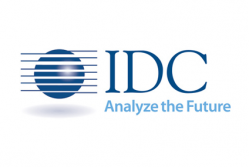The worldwide market for smart home devices inclusive of connected lights, smart speakers, connected thermostats, smart TVs, home monitoring/security products, digital media adapters, and more, grew 38.5% to 130.1 million shipments in the second quarter of 2018 (2Q18).
Outside of smart TVs, digital media adapters, such as the Roku devices and Amazon’s Fire TV, accounted for the largest share of the smart home devices market. This category grew 26.8% year over year during 2Q18, according to the International Data Corporation (IDC) Worldwide Quarterly Smart Home Device Tracker. While today’s smart TVs replicate much of the functionality offered by digital media adapters, the general lack of software updates and vast installed base of non-smart TVs has allowed digital media adapters to proliferate.
“Networked entertainment represents a key stepping stone for consumers as they embark on their smart home journeys,” said Adam Wright, senior research analyst for IDC’s Consumer IoT Program. “Digital media adapters are an important gateway into content ecosystems as well as broader consumer IoT ecosystems in general – such as smart assistants and related services – and their low price point is drawing interest from a growing base of consumers worldwide.”
Amazon’s line of Fire TV products led the pack in 2Q18 with close to 5 million units shipped worldwide. While many compare the retail giant’s efforts to other over-the-top (OTT) services like Netflix or Hulu, the reality is that Amazon also competes with other hardware makers such as Roku and Google. And Amazon has been leading by a large margin thanks to a growing lineup of content that appeals to an international audience. To date, the company has not only been successful in the U.S., but it has also captured a substantial share in other countries like India, Japan, and the United Kingdom.
In second place behind Amazon was the search giant Google with Chromecast. The low-cost, simple option has worked extremely well for Google as many customers have purchased more than one device. With built-in support for Google Home and, more importantly, YouTube, Google has managed to carve out a noteworthy piece of the pie by shipping 3.7 million devices across the globe during 2Q18. However, given the age of the product, Google’s shifting focus towards the Assistant (and smart speakers to go with it), as well as the inclusion of streaming and other capabilities built into many modern TVs, the outlook for standalone Chromecast devices remains tempered.
Rounding out the top 3 was Roku. Although this company has been extremely popular in the U.S., its presence in the rest of the world remains limited. However, the company’s unique business model of being a content delivery platform rather than a hardware maker has allowed it to offer some extremely low-cost products that cater to value-conscious consumers. Furthermore, the company also licenses its operating system to third-party TV brands and set-top box makers, neither of which are included in the 2.8 million devices that Roku itself shipped in 2Q18. Looking ahead, although the company faces stiff competition from Amazon – the retailer recently enticed some of Roku’s former partners to join the Fire TV team – Roku still has plenty of room to grow by expanding into international markets, as seen with the recent availability of the Roku Channel in Canada.
“The tight integration of content and hardware has been a highly successful strategy to date and we only expect the walls in these gardens to grow taller and wider as these companies begin to create ecosystem lock-in by further integrating with additional smart home devices and services,” said Jitesh Ubrani senior research analyst for IDC Mobile Device Trackers. “Despite this, IDC still expects the market for more neutral hardware platforms like Roku to grow as consumers are rarely faithful to one content provider.”

